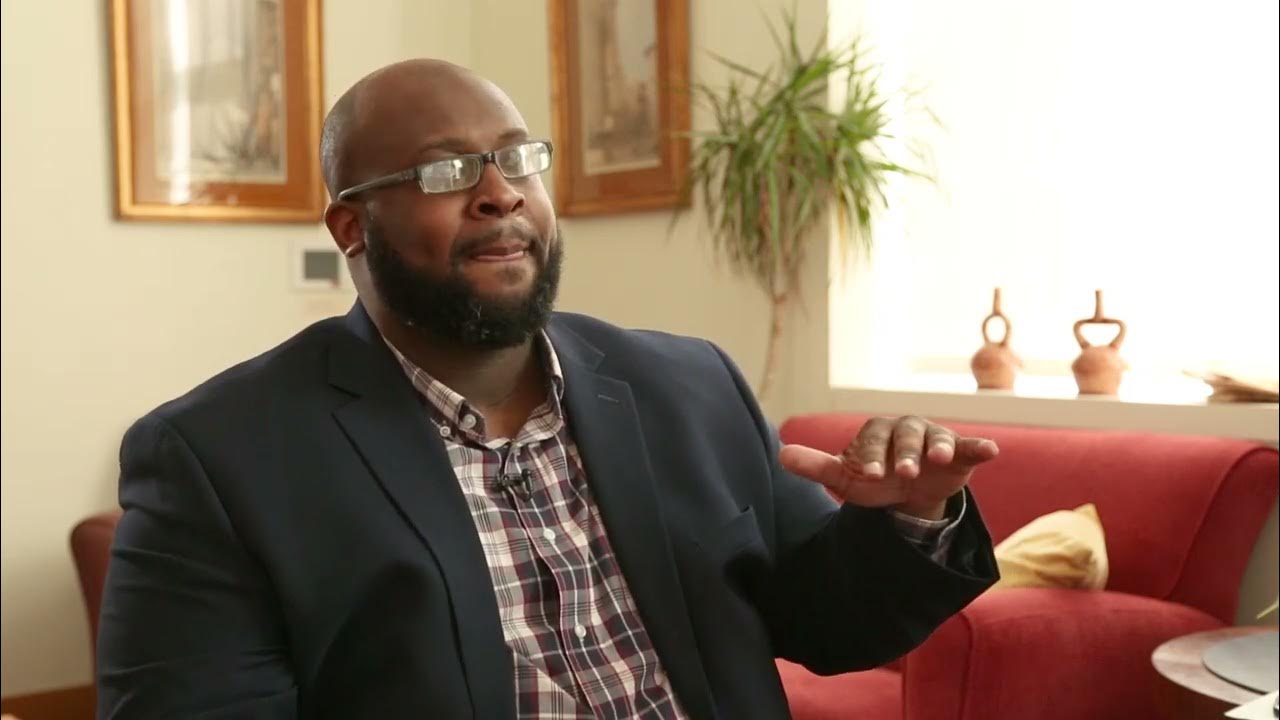How did enslaved ppl build communities?
Summary
TLDRThis script highlights the multifaceted lives of enslaved people, emphasizing that their existence extended far beyond their labor on plantations or farms. Despite the exhausting workday, enslaved individuals found time to build communities, form friendships, engage in family life, and create cultural expressions. They shared stories, taught each other to read, played music, and attended religious gatherings. These activities helped them create bonds and support one another, forming a vital part of their resilience and humanity in the face of enslavement.
Takeaways
- 😀 Enslaved people's lives extended beyond their labor, involving community-building and personal connections.
- 😀 The common narrative of slavery often focuses on labor, but enslaved individuals also had rich, complex lives outside of work.
- 😀 Despite exhausting working days, enslaved people found time for friends, family, and community activities.
- 😀 Enslaved people participated in storytelling, teaching each other how to read, and sharing their knowledge and experiences.
- 😀 Music, dancing, and singing were integral parts of the enslaved community's culture, offering moments of joy and resistance.
- 😀 Religious practices played a key role in enslaved people's lives, with Bible reading and attending sermons being important rituals.
- 😀 Even without formal education, some enslaved individuals became literate and shared their knowledge with others.
- 😀 Traveling preachers often brought new religious messages to enslaved communities, providing spiritual guidance and solidarity.
- 😀 Despite being oppressed, enslaved people created strong, supportive networks to help each other cope with the hardships of slavery.
- 😀 The experiences of enslaved people were diverse, but a shared sense of community and resilience was central to their survival and humanity.
Q & A
What are some common narratives associated with enslaved people's lives?
-Common narratives often focus on enslaved people as laborers, specifically regarding the physical work they performed on plantations or farms. These narratives tend to emphasize the taxing and exhausting nature of their daily labor.
How did enslaved people's lives extend beyond their labor on plantations?
-Enslaved people's lives went beyond their work, as they still had personal relationships, family obligations, and time for leisure. They engaged in activities such as cooking, storytelling, music-making, dancing, singing, and even learning to read.
How did enslaved people manage to make time for social and cultural activities despite their labor?
-Despite the demanding workday, enslaved people still found time to connect with others, whether by cooking meals together, socializing, or practicing cultural traditions such as music, dance, and religious activities.
What role did storytelling play in the lives of enslaved people?
-Storytelling was an important way for enslaved people to communicate their experiences, pass down cultural knowledge, and build a sense of community. It was a form of emotional and intellectual resistance and preservation.
Did enslaved people have opportunities to learn how to read?
-Yes, in some cases, enslaved people were able to learn how to read. This often occurred when a literate individual, sometimes an enslaved person, had access to a Bible or pages from it, which they would share with others.
What kinds of religious activities did enslaved people engage in?
-Enslaved people engaged in religious activities such as reading the Bible, singing hymns, and attending sermons. Traveling preachers sometimes visited and offered religious teachings to enslaved communities.
How did enslaved people build community among themselves?
-Enslaved people built community through shared activities and mutual support. They gathered for social, cultural, and religious activities, which helped them cope with their circumstances and form strong bonds despite the hardships they faced.
What was the significance of enslaved people coming together for social and religious activities?
-These gatherings provided a sense of solidarity and emotional support. They allowed enslaved people to express themselves, preserve their cultural identity, and resist the isolation imposed by slavery.
How did enslaved people's lives challenge the narrative of them solely being laborers?
-Enslaved people's lives were multifaceted, involving more than just labor. They maintained personal relationships, engaged in cultural practices, and found ways to resist and endure through shared activities and support, showing they were not defined only by their labor.
In what ways did enslaved people’s activities outside of labor contribute to their resilience?
-Engaging in activities like music, dance, storytelling, and religious practices allowed enslaved people to retain a sense of identity, joy, and emotional strength, which were crucial for enduring the hardships of enslavement.
Outlines

このセクションは有料ユーザー限定です。 アクセスするには、アップグレードをお願いします。
今すぐアップグレードMindmap

このセクションは有料ユーザー限定です。 アクセスするには、アップグレードをお願いします。
今すぐアップグレードKeywords

このセクションは有料ユーザー限定です。 アクセスするには、アップグレードをお願いします。
今すぐアップグレードHighlights

このセクションは有料ユーザー限定です。 アクセスするには、アップグレードをお願いします。
今すぐアップグレードTranscripts

このセクションは有料ユーザー限定です。 アクセスするには、アップグレードをお願いします。
今すぐアップグレード関連動画をさらに表示
5.0 / 5 (0 votes)






